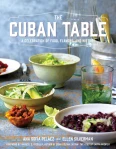So Far, Yet So Near
I am always looking for the best ingredients, but there are some things I just can’t find nearby and some I probably shouldn’t be able to find nearby. I try to stay local but the temptations of a jet-setting Prosciutto di Parma or a well traveled Chinatown dragon fruit can be difficult to resist. Still, it’s hard not to wonder what your missing when someone else does the picking and packing. The subtle differences between varieties and vendors that you can only discern when it’s close to home. That’s why, when trying a new cuisine, dessert can be the best place to start. I may not find the right Peruvian pepper or Argentinian zapallo, but milk, grains and sugar are universal and need little translation (or transatlantic travel). I’d been looking for a Chilean recipes to try and found several I wanted to include but kept circling back to this custard made with semolina and wine syrup (wine being the exception that was meant to travel the earth).
A simple recipe, I could have made it with cornstarch or cornmeal, dried fruit or orange peel, syrup or caramel. The flavor was subtly sweet but not at all bland, and I look forward to making it again with fresh summer fruit and adding a little more spice in the fall. Mirtha Umana-Murray translates Chile from the Aimará language as “the land at the end of the world” so it only seems right that my first Chilean recipe should start where most meals finish. Plus, with the world temporarily running on South African time, the ends of the earth don’t seem so far away.
Sémola con Leche con Miel de Vino/Semolina Pudding with Red Wine Syrup
Adapted from Three Generations of Chilean Cuisine by Mirtha Umana-Murray. The original recipe called for cornstarch and possible substitutions include white cornmeal, polenta, and semolina. Texture and cooking times may vary depending on which grain is used. I came across a note suggesting a Chilean Cabernet Sauvignon as a pairing for the vaca frita and made this for dessert.
1/2 cup semolina (cornstarch, white cornmeal, or polenta)
1/2 cup sugar
4 cups whole milk
1 medium lemon or orange rind
1 teaspoon vanilla extract
1 cup Miel de Vino (see below)
Pour the milk into a medium, heavy saucepan. Whisk in the semolina and sugar, stirring constantly to avoid lumps. Add the lemon rind and slowly bring to a boil over medium heat. The custard will begin to thicken quickly so stir constantly to avoid sticking. Simmer for about 3 minutes and remove from heat.
Remove lemon rind and stir in the vanilla. Pour into moistened individual molds and let them cool until the pudding sets. Unmold and serve at room temperature topped with wine syrup and fruit on the side.
Miel de Vino/Wine Syrup
1 bottle red wine such as Cabernet Sauvignon
1/2 cup sugar
1 slice lemon rind
1 teaspoon vanilla extract
Combine wine, sugar and lemon rind in a heavy medium saucepan. Bring to a boil over medium heat and simmer until the liquid has reduced by half, about 30 minutes. Remove the lemon rind, stir in the vanilla, and let it cool. Serve cold.










These are lovely. Can’t wait to make “miel de vino”.
These look delicious. Such great photos!
These look exquisite and have my mouth watering (which is not so exquisite…hehe)
Hi there, I am Chilean and I loved this variation of our traditional pudding. The Chilean would love the caramel and the semolina as it is, it remind us about or childhood, grandmother, family, homemade aromas and flavors, but if you want to introduce this in a dinner party for a more international crowd, it really sound good! My mother used to put wine in the meringue! hmmm nice.
Take care,
Lorena.
No one is really sure though, what Chile means. :O